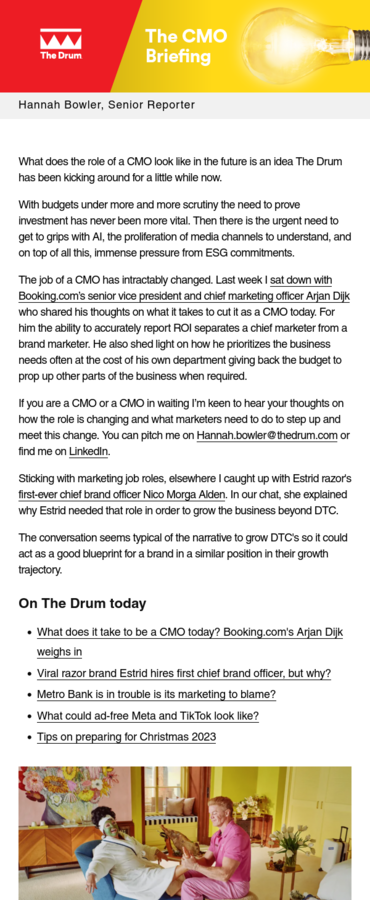La Liga’s rebrand sees it emulating in-game broadcast style of EA Sports FC
The Drum heads to Atlético Madrid’s home stadium for a hands-on demonstration of how Spanish football is taking a leaf out of its new sponsor’s playbook.
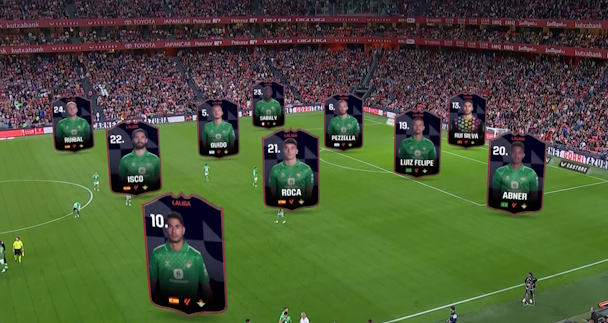
La Liga's EA Sports FC-style rebrand
Spanish football’s top flight underwent a rebrand earlier this season, visually aligning with new sponsor EA Sports FC in a bid to reach Gen Z fans of the video game.
EA’s hyper-real Fifa franchise had long been synonymous with the sport, licensing the likeness of players, clubs, tournaments and stadiums from the governing body before their very public break-up with the Fifa organization.
This fallout coincided with a new five-year deal as the primary lead sponsor of La Liga’s first division, La Liga EA Sports, and its second division, La Liga Hypermotion, as the publisher strived to build brand awareness of the newly named game fast.
The league, meanwhile, hopes to emulate the video game’s popularity by aping its visual style from a production perspective. Unlike the English Premier League, it has complete control of its broadcast output and has been able to move fast.
Advertisement
La Liga x EA Sports
The Drum is in Madrid to see first-hand how La Liga is emulating EA’s in-game broadcast style – long admired by sports production experts jealous of what its virtual camera can do and how it presents stats in real-time.
A presentation from La Liga Tech, the subsidiary that brings together its technological solutions, shows that the league collects more on-pitch data than it could ever hope to display. However, the production team has been exploring new ways to present it during live games; while the video game has no issues doing this, it is much harder for physical broadcasters.
Explaining how the “video-first” identity came to life across the league’s properties, Roger Brosel, head of content at La Liga, says: “The league needed complete control of its franchisees to get them to buy into elements of this identity.”
Advertisement
That varied from allowing unprecedented access to players, even in the locker rooms, to little details like enforcing a singular font that will be consistent across everything from in-feed graphics to the back of player kits.
La Liga retains complete control of its output via a partnership with Spanish sports rights and broadcasting group Mediapro – unlike the English Premier League, which will have a different look based on the broadcaster holding the rights. In essence, that control is what has empowered La Liga to integrate EA Sports so closely into its product.
With new bench, aerial and cinematic cameras being implemented across all of the top leagues’ stadiums, the in-game visuals are coming to life in the sport this season.
Meanwhile, dynamic AR graphics presented in real-time will provide more detail during lulls in the game’s momentum. EA Sports FC players will immediately notice the similarities between the broadcast and the game, from the Ultimate Team-style player cards (main image, top of page) to the cursors that focus on playmaking individuals (below).
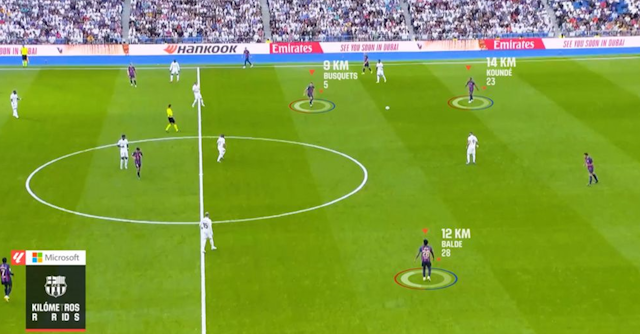
But these innovations have an unlikely origin from when Santander was still the lead sponsor. The implementation of AR graphics first came during the pandemic when the league had to add some character to empty stadiums. That meant, even ironically, using the stadium audio the league sends to EA to use in its games.
Brosel tells us: “At the beginning of each season, we send EA Sports the audio from each action in the stadiums. You have the exact audio of a specific team’s shot on target at home ground, for example. [During the pandemic] we had DJs play this audio in the live feeds.”
But it has taken a long time for La Liga to double the value of its match rights. Brosel says that was super-charged in 2016/17: “We started producing our own matches. It’s different from the Premier League. It is done with our own standards, then it is distributed to rights holders.”
Suggested newsletters for you
Meanwhile, the video game flashed past what any sports broadcaster can do, he says. “EA Sports FC now looks like a broadcast. The technology for game creators has progressed so much that they have no limitations when it comes to virtual camera angles. We cannot do that so easily, but we try to replicate those angles with aerial cameras, penalty cameras and real-time graphics.”
On the AR front, in particular, he says: “We wanted to be more interactive. We know how young people watch football. We had to be closer to the fans and use technology to improve the broadcasts.” This even includes using QR codes to promote matches and host competitions.
“We had the same graphics for seven years, each for their own platforms. We wanted them to look premium, elegant and sleek. For the new branding, we wanted to do a 180 turn, go for lighter colors and change the font sizes.” (Readability on mobile was front of mind when designing the new assets, with La Liga data claiming up to 20% of match viewers do so on mobile or tablet.)
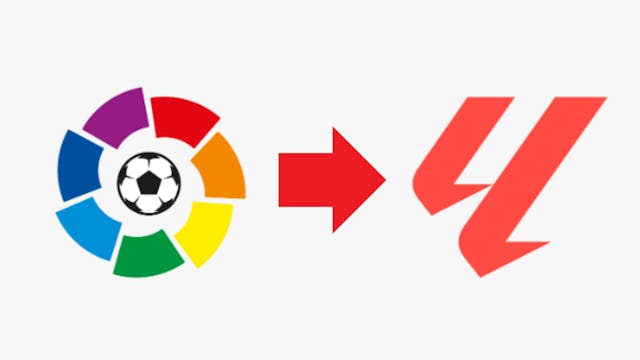
On the new La Liga identity, Brosel adds: “Our old logo was created in the 90s and had no motion in it. Our new one is video-first, not even digital-first; it is how most people will interact with it.”
The new logo is imbued with a flashy ‘secret code’ – lots of moving parts and eye-catching executions viewers will be attracted to.
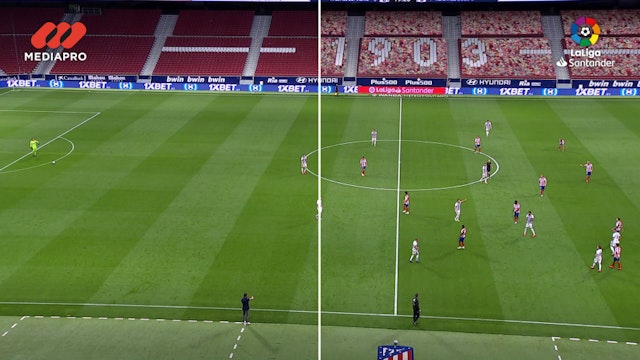
During covid, it also used AR tech to fill the stands with virtual fans. Something the Fifa video game at the time was all too well accustomed to.
“Covid was over, people were back, but the AR tool was mastered during Covid and we built new things to show all our data on the pitch.”
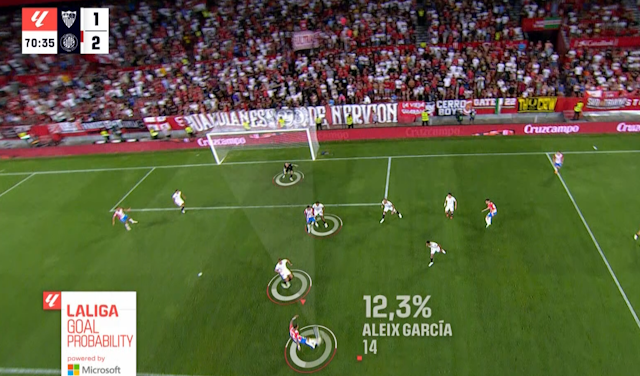
Before the implementation of AR, the league was collecting a lot of data that would be difficult to display to viewers using Mediacoach, a match data analytics and visualization platform that records 3.5m data points every match day. “There are many interesting things in MediaCoach that are hard to explain to the audience quickly,” says Brosel. ”We were looking to find ways to implement these visuals to explain the data for this new media era.”
Now that it has found a way to do that, the challenge is upping the output. Brosel concludes that these features also help viewers see a “real connection with the video game.”


